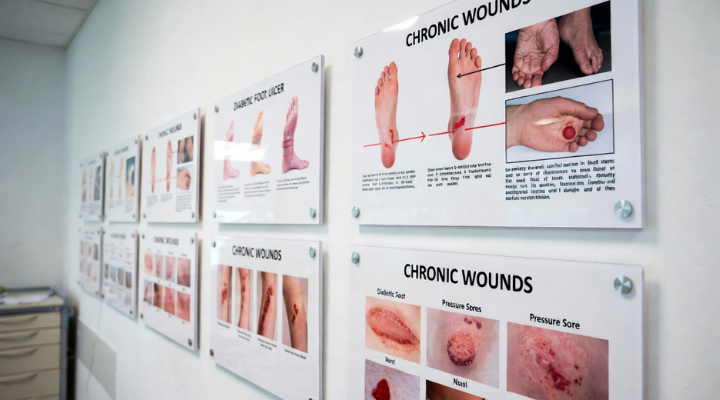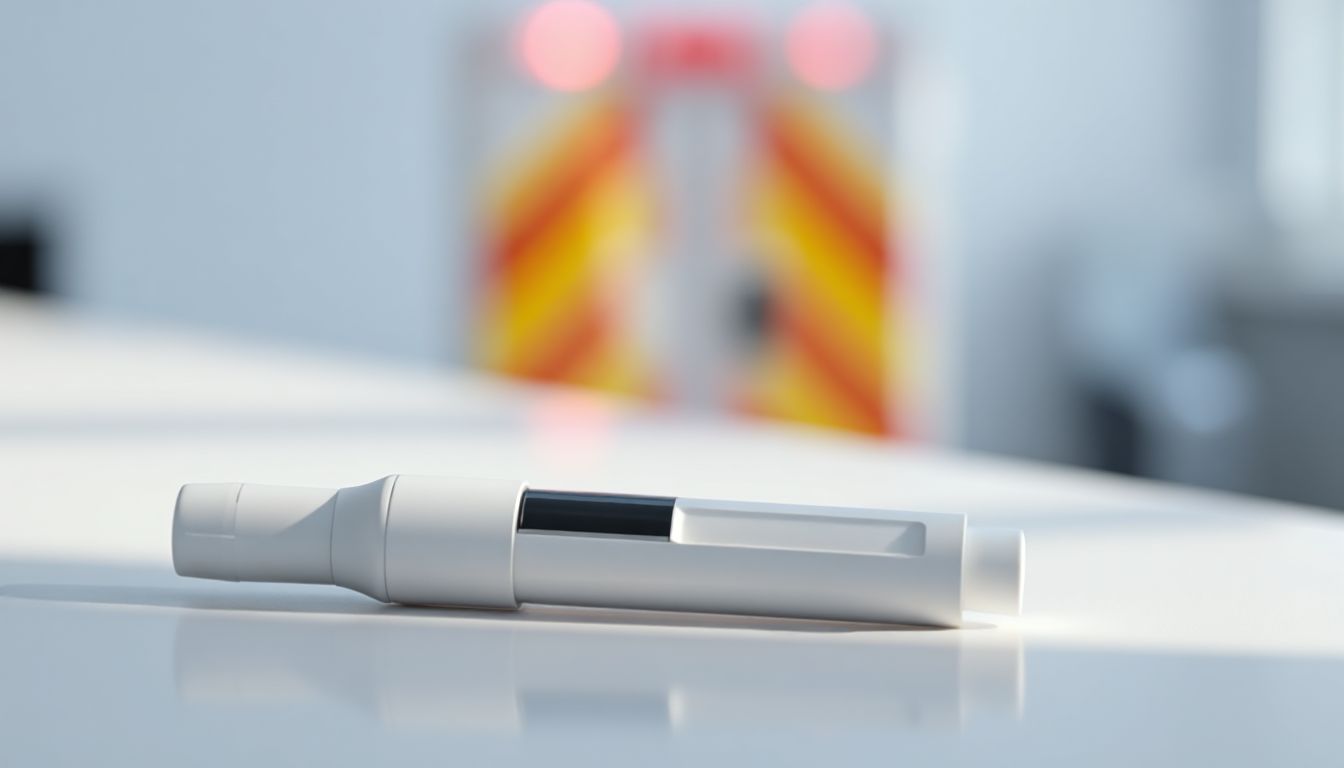
Types of Chronic Wounds: Symptoms, Risks & Treatment Insights
Chronic wounds are injuries to the skin or underlying tissues that fail to heal in a timely manner, usually within four to eight weeks. These wounds are more than a nuisance—they present a serious healthcare challenge that can impact quality of life, increase healthcare costs, and raise the risk of severe complications such as infections or amputation.
Whether you’re a healthcare professional, caregiver, or someone managing a chronic wound, understanding the types, symptoms, risk factors, and best approaches to treatment is crucial for optimal recovery and overall health.
What Are Chronic Wounds?
A chronic wound is one that shows little or no sign of healing after several weeks. Unlike acute wounds, which heal through an orderly and timely process, chronic wounds stall in one of the healing phases—usually due to underlying medical conditions or repeated trauma. These wounds can become sources of persistent pain and infection, emphasizing the need for targeted management strategies.
Common Types of Chronic Wounds
Chronic wounds fall into distinct categories, each with its own causes, symptoms, and treatment approaches. The table below summarizes the most prevalent types:
| Wound Type | Common Locations | Key Risks | Typical Symptoms |
|---|---|---|---|
| Diabetic Ulcers | Feet | Diabetes, poor circulation | Red or blackened tissue, numbness, drainage, swelling |
| Pressure Ulcers | Back, heels, hips | Immobility, advanced age | Open sores, discoloration, foul odor, tenderness |
| Venous Leg Ulcers | Lower legs, ankles | Varicose veins, inactivity | Shallow sore, aching, swollen legs, itchy or thickened skin |
| Arterial Ulcers | Toes, feet | PAD, smoking, diabetes | Punched-out wound, cool skin, pain at rest, pale base |
| Non-Healing Surgical | Surgical sites | Infection, poor nutrition | Persistent redness, swelling, discharge, wound separation |
1. Diabetic Foot Ulcers
Diabetic foot ulcers are one of the most common and serious complications of diabetes. High blood sugar damages nerves and blood vessels, reducing sensation and impairing circulation, especially in the feet. Even small cuts or blisters can progress into deep, infected ulcers if left unattended.
Symptoms:
-
Red, black, or yellow tissue in wound base
-
Swelling or warmth in affected area
-
Drainage (sometimes with a foul odor)
-
Numbness or tingling
Risks:
People with poor glycemic control, neuropathy, or history of previous foot ulcers are at higher risk.
2. Pressure Ulcers (Bedsores)
Pressure ulcers form when prolonged pressure restricts blood flow to parts of the body, causing tissue damage and eventual skin breakdown. Elderly adults, paralyzed individuals, and hospitalized patients are particularly vulnerable.
Symptoms:
-
Redness or discoloration (early stages)
-
Open sores with or without drainage
-
Pain or tenderness at the site
-
Surrounding skin may feel cool or warm
Risks:
Immobility, poor nutrition, incontinence, and advanced age increase the risk.
3. Venous Leg Ulcers
Venous leg ulcers usually develop on the lower legs, often just above the ankles. These are primarily caused by chronic venous insufficiency, where poor vein function leads to increased pressure and immune changes in the surrounding tissues.
Symptoms:
-
Shallow, irregularly shaped wound
-
Aching, swollen leg
-
Skin discoloration (brownish or darkened areas)
-
Itching or thickened skin around the ulcer
Risks:
Varicose veins, obesity, history of deep vein thrombosis, and prolonged standing or sitting.
4. Arterial (Ischemic) Ulcers
Arterial ulcers, also called ischemic ulcers, result from reduced circulation due to peripheral arterial disease (PAD). These ulcers most often appear on the toes, feet, or heels and are notoriously painful.
Symptoms:
-
Punched-out appearance with well-defined edges
-
Pale or necrotic base
-
Cool skin around the ulcer
-
Severe pain, especially at night or when legs are elevated
Risks:
PAD, smoking, diabetes, high cholesterol, and advanced age.
5. Non-Healing Surgical Wounds
While most surgical wounds heal without problems, some may persist due to infection, poor nutrition, or underlying illness.
Symptoms:
-
Redness and swelling around the incision
-
Separation of wound edges
-
Persistent pain or tenderness
-
Discharge or pus
Risks:
Immunosuppression, obesity, diabetes, inadequate wound care.
Why Chronic Wounds Fail to Heal
Chronic wounds typically remain in a prolonged inflammatory phase due to:
-
Poor blood flow or oxygenation
-
Infection or biofilm formation
-
Repeated trauma to the wound site
-
Deficiency of nutrients needed for new tissue growth
-
Underlying medical conditions (e.g., diabetes, vascular disease)
Recognizing and addressing these obstacles is key to successful wound management.
Complications of Chronic Wounds
Chronic wounds can lead to serious complications if not properly managed:
-
Infections: Wounds can harbor bacteria, leading to cellulitis, abscesses, or bone infection (osteomyelitis).
-
Sepsis: Infection from the wound can spread to the bloodstream, becoming life-threatening.
-
Amputation: Uncontrolled infection or tissue death may require surgical removal of affected tissue, especially in diabetic foot ulcers.
-
Reduced mobility: Pain and tissue loss can impair walking or movement.
-
Psychological distress: Long-term wounds may cause anxiety, depression, or social isolation.
Treat Chronic Wounds with DermaBind
When traditional treatments such as regular dressings, pressure management, infection control, and standard wound care fail to produce results, advanced interventions become crucial. DermaBind is a biologic skin substitute specifically designed for chronic and non-healing wounds, such as diabetic foot ulcers and venous leg ulcers.
How DermaBind Works:
Derived from intact placental membranes, DermaBind provides a three-layer allograft applied after at least 30 days of unsuccessful basic treatment. It is engineered to:
-
Increase blood flow to the wound
-
Remove nonviable tissue (debridement)
-
Encourage healing by fostering tissue growth from the wound base upward
This advanced approach is particularly useful for stalled wounds, offering significant benefits in wound closure rates, area reduction, and improvement of patient outcomes over a structured care period (typically 12 weeks).
Who Benefits from DermaBind?
-
Patients with chronic wounds not healing with standard care
-
Individuals with diabetic foot ulcers or venous ulcers
-
Cases managed by specialists such as vascular surgeons, podiatrists, and wound care teams
Clinical Insights:
Recent clinical trials have shown that DermaBind may improve wound closure, speed up healing, and decrease infection and recurrence rates, providing a valuable option for comprehensive wound care, especially in tough-to-heal or complex cases.
Steps for Effective Chronic Wound Treatment
Managing chronic wounds requires a structured, multidisciplinary approach. Some key steps include:
-
Comprehensive Assessment
-
Identify the underlying cause (vascular, neuropathic, pressure, or mixed)
-
Evaluate size, depth, and severity of the wound
-
Assess for signs of infection
-
-
Wound Cleaning & Debridement
-
Remove dead tissue (debridement) to promote healing and reduce infection risk
-
Cleanse with saline or appropriate wound cleansers
-
-
Managing the Underlying Cause
-
Improve blood flow (if arterial disease is present)
-
Optimize blood glucose in diabetes
-
Relieve pressure in pressure ulcers using special mattresses or cushions
-
Support venous return with compression therapy for leg ulcers
-
-
Choosing the Right Dressings
-
Select dressings that maintain a moist environment, control exudate, and protect from infection
-
Consider advanced dressings or wound care technologies (hydrocolloids, alginates, antimicrobial dressings)
-
-
Infection Control
-
Use topical or systemic antibiotics as needed for infection
-
Monitor for signs of worsening infection and adjust treatment promptly
-
-
Adjunctive Therapies
-
Negative pressure wound therapy (NPWT)
-
Hyperbaric oxygen therapy for certain complex wounds
-
Skin grafts or biologic dressings in non-healing cases
-
-
Optimizing Patient Health
-
Address nutritional deficiencies with diet or supplements
-
Manage chronic health conditions
-
Encourage smoking cessation and appropriate exercise
-
-
Education & Follow-Up
-
Educate patients and caregivers on wound care and warning signs of complications
-
Regular follow-up with a wound care specialist
-
When to See a Specialist
Early involvement of a wound care specialist or multidisciplinary team greatly improves outcomes. Seek medical advice if you or someone you care for has:
-
A wound that isn’t healing after several weeks
-
Signs of infection (redness, warmth, swelling, pus)
-
Increasing pain or fever
-
Blackened or dead tissue
-
Foul-smelling discharge
Timely intervention can prevent further complications and speed up healing.
Prevention Tips
Preventing chronic wounds is often easier than treating them. Here are some proactive measures:
-
Inspect skin daily, especially in high-risk areas
-
Moisturize dry skin to prevent cracking
-
Avoid prolonged pressure—reposition frequently if bedridden
-
Wear well-fitting footwear, especially for those with diabetes
-
Manage chronic illnesses diligently
-
Keep wounds clean and protected
Conclusion
Chronic wounds are a complex but manageable condition when approached methodically. Recognizing the type, understanding the risks, and following evidence-based treatment protocols can make a significant difference in healing and long-term health. If you suspect a chronic wound, don’t delay seeking professional help—timely action can mean faster recovery and a better quality of life.

 Previous Post
Previous Post


